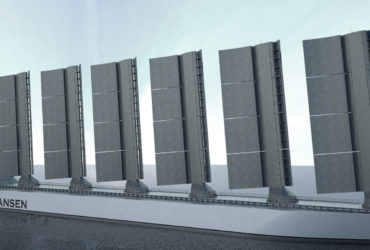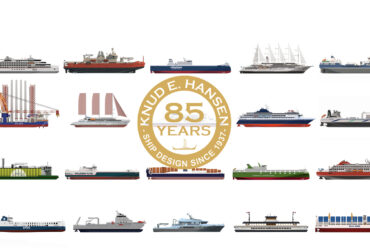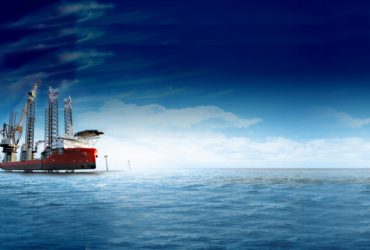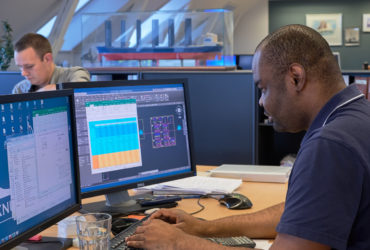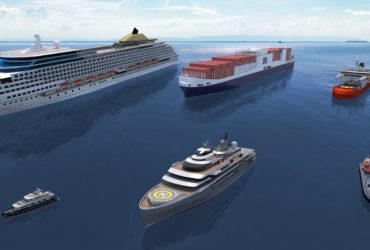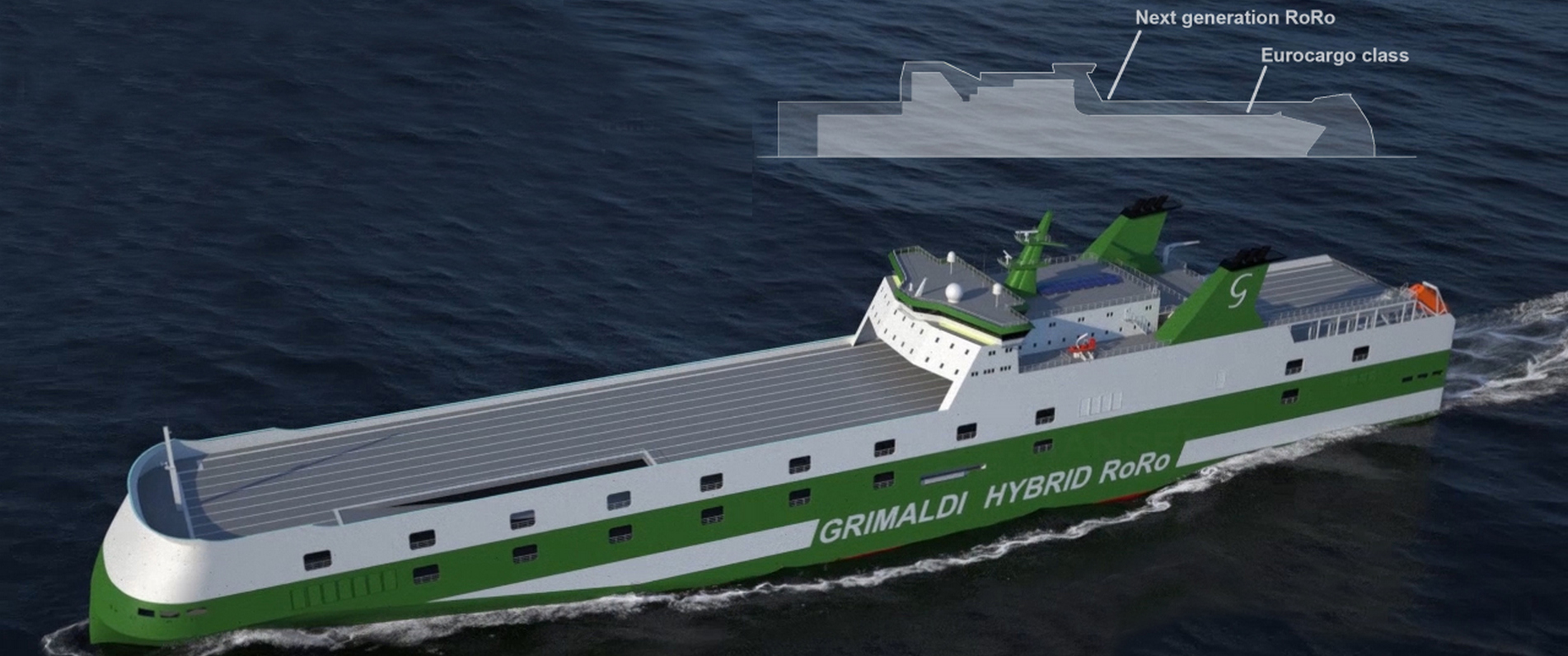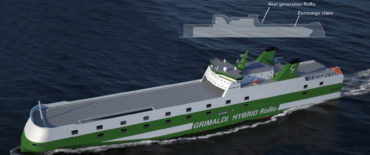Article written by Mr. Philippe Holthof/ The Naval Architect
Sustainability was the buzzword of this year’s Euromed convention, which the Grimaldi Group hosted in Sardinia in late September. To suit the action to the word, the group was poised to unveil details of the next generation of ultra-· green freight ro-ros, which the Neapolitan group is about to order from China.
The Grimaldi Group seized the opportunity of the Euromed convention to raise its ‘green’ voice.
In July the group joined the Global Industry Alliance (GIA), a public-private partnership initiative of the IMO under the framework of the G EF -UNDIMO GloMEEP project that aimed to bring together maritime industry leaders to support an energy-efficient and low-carbon maritime transport system. “Reduction of emissions and energy saving,” Emanuele Grimaldi, Grimaldi Group’s co-Managing Director said, “is not just about improving the ecosystem. It’s also about a survival of the fittest as only the most fuel-efficient ships will remain competitive and non-complying operators will be pushed out.”
The International Chamber of Shipping (ICS), the principal global trade association for shipowners and operators and who chose Emanuele Grimaldi as the organisation’s vice-chairman earlier this year, has urged the IMO to reduce CO2 emissions per tonne-km by at least 50% by 2050, compared to that of 2008, in order to meet the target outlined in the Paris Agreement on climate change. Obviously, reducing CO2 from shipping is a global issue, which, according to the ICS, can only be addressed successfully at global level by IMO. Therefore, it is in the shipping sector’s interest that IMO remains in the driver’s seat rather than risk the danger of market distorting measures at EU or national level.
“Irrespective of the future price of oil,” Mr Grimaldi said, addressing the 400-plus delegates at the convention, “the decarbonisation trend is set. This partially explains why efficient operators deploy ever-bigger ships in all sectors of shipping, betting on economies of scale and sharply reducing emissions per tonne transported.” Never a strong supporter of LNG as fuel because the LNG tanks require extra space, which comes at the expense of payload and because supply of LNG in the Med is almost non-existent, he then advocated a switch to battery technology, which is evolving at a rapid pace. “We are living in an era where batteries are replacing combustion engines and the first allelectric ships have emerged in Norway, traditionally the green tech pioneers,” he added.
Besides decarbonisation, shipping is also entering the digital age, which, Mr Grimaldi said, “is yet another unknown area of progress with the first autonomous ship coming on stream in Norway in 2018.”
Concentration, or better still consolidation, was another topic Mr Grimaldi touched upon. “Obsolete ships, high fuel consumptions and zero-investment policies are no option anymore in today’s business climate. But necessary investments come at a cost and that’s why we see fewer, yet larger players in all shipping markets. The boxship sector has shown the way forward and during the last year alone the number of alliances shrunk from five to three, offering 90% of the capacity.”
GGSG – TME ULTIMATE GREEN RO-RO
At last year’s Euromed convention, Mr Grimaldi already announced that he would order ro-ro freighters, the likes of which “the world had never seen before”. Although he then expected
the newbuilding contract for these so-called GGSG – Grimaldi Green 5th Generation – ships would be concluded in early 2017, it now appears that he has waited to further finetune the concept in association with Knud E. Hansen, the ship’s naval architects, and ‘buy time’ to introduce the best in class battery technology available. Indeed, the ships will have lal’ge lithium batteries that will be charged while the ships are at sea and cost has been a factor. “When we initiated the GGSG project, batteries were 100% more expensive,” explained Mr Grimaldi.
Once alongside in port, the ships will run on battery power, guaranteeing zero emissions. In several ports along the North and Baltic coasts, cold ironing facilities are in place connecting ships to the local electricity grid. However, according to Mr Grimaldi, this is hard to realise in Mediterranean ports. “Due to the climate, we need a lot of power for AC units and are already experiencing a power shortage because of this. Perhaps most tellingly, we are using a generator for AC purposes in our head office.”
The eco-credentials are not restricted to battery technology alone, as the next generation ro-ro freighters will boast a list of patent-pending innovative energy efficiency elements. Besides an optimised hull form, the ships will be equipped with Rolls-Royce Promas Lite integrated rudder propellers, twin 2-stroke engines, an air lubrication system allowing the ships to ride on a carpet of air bubbles to reduce frictional resistance, and solar panels. The Group’s Technical and Energy Saving Department, in close cooperation with Knud E. Hansen, has played a key role in the environmental optimisation and the ships will also feature a hydrodynamicdesigned ‘reverse’ bow.
Also attending the Euromed convention was Mikael Makinen, president of Rolls-Royce Marine. He praised Grimaldi’s approach to combining different fuel consumption reduction technologies, adding, “a well-trained crew can save a lot of energy – we see it every day when monitoring our engines.”
The GGSG hybrid ships (combination of combustion engines and batteries) will likely be fuelled by IFO and a new generation of electronic main engines. Scrubbers will reduce particulate matter (PM) and sulphur emissions drastically. Mr Grimaldi claimed that sulphur emission would be reduced fortyfold.
Economies of scale are, obviously, also an element that will reduce emissions per tonne-km and the 235m by 34m behemoths will have an intake of 7,300 lanemetres, equivalent to 500 trailer spaces spread over five decks. Excellent manoeuvrability guaranteed by two CPPs, bow thrusters and flap rudders as well as fast loading and unloading are paramount to reducing turn-round times.
At the time of writing, Grimaldi was awaiting bids from four different yards in China and was still hoping to have the first ships delivered in early 2020. Six ships will be ordered with an option for four more.
COMPETING WITH ROAD AND RAIL
The new ships are primarily meant for further organic growth in the Mediterranean and will likely replace the 3,810-lanemetre Hyundai Mipo ro-ros, which, in their turn, will replace older and less fuel-efficient Eurocargo vessels, some of which may possibly be disposed of for recycling.
Mr Grimaldi is convinced that more trucks can be taken off the road. “Every year we generate 150,000 extra trailers,” he elucidated on the Group’s strategy, also referring to the two MoS cabotage services from northern to southern Italy in the Adriatic and Tyrrhenian Seas.
“It’s becoming increasingly popular and we see supermarkets sending their trailers on our ships. These services now carry over 50,000 trailers per year. Assuming that a trailer carries some 30 tonnes of goods over a 1,000-kilome- tre distance, the cabotage services are subtracting 1.5 billion tonne-km from the roads.”
With the new high-capacity vessels, Mr Grimaldi expects to take much more business away from road and rail. “Land transport remains our biggest competitor,” he said. “We also see this in the Baltic. Finnlines controls 70% of the seaborne ro-ro freight market between continental Europe and Finland with Transfennica having the remaining 30%. Even so, Transfennica is not our main competitor; it’s the road.” But Mr Grimaldi said that he also wanted to take traffic away from short-sea container carriers. “After all, it’s more attractive to ship goods in trailers that go ro-ro than in containers going lo-lo.”
The group’s business model is based on continuous expansion with new routes being added when the opportunity arises. Grimaldi considers doubling the frequency on the weekly SavonaBarcelona-Tangier Med ro-pax service and may also add a weekly France-Tangier Med route.
LENGTHENING TWO CRUISECLASS RO-PAXES
Traffic on the daily CivitavecchiaBarcelona (with two to five weekly stops in Porto Torres, Sardinia) is also buoyant. Plans were unveiled to lengthen the 2008-built CRUISE ROMA and CRUISE BARCELONA. A project worth EUR 60 million, negotiations with Fincantieri – the ships’ builder – are on-going.
In 2019, the 2,7 94-passenger, 3,060-lanemetre flagships will be sent to the Italian shipbuilder’s Palermo facility where a prefabricated 30m mid-body section will be inserted. The yard has vast experience in lengthening passenger ships and was also responsible for the nearly 24-metre lengthening of MSC Cruises’ Lirica-Class vessels.
The post-conversion Cruise-Class ro-paxes will have 500 extra seats with the enlarged public space decks boasting an ice-cream parlour and a fast food restaurant serving typical Sardinian specialities. The new section will also contain 50 extra cabins and will further boost the freight capacity with 50 trailers and 50 cars on the separate car deck.
Four mega batteries will also be installed in the new bottom part of the ships to switch to zero-emission mode while in port.
Grimaldi Group’s newbuilding team is also developing a new, ultra-green ro-pax generation that will incorporate hybrid technologies, including batteries. However, Mr Grimaldi told ShippaxInfo that he was not in a hurry. “Battery technology is developing fast, so I prefer to wait and see what the others do and would like to learn from the mistakes they could potentially make.”


